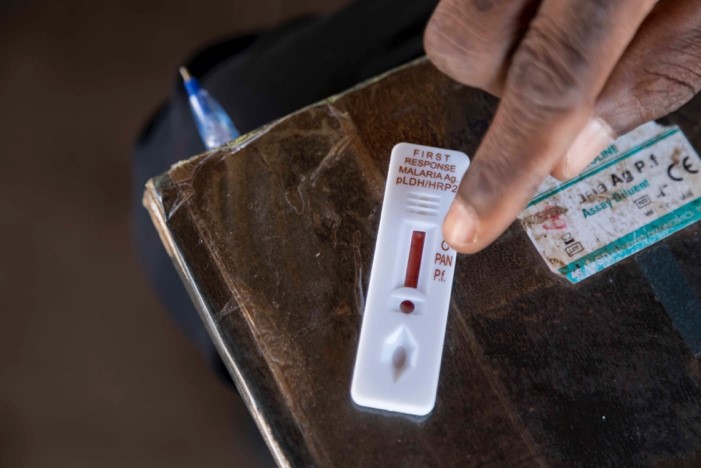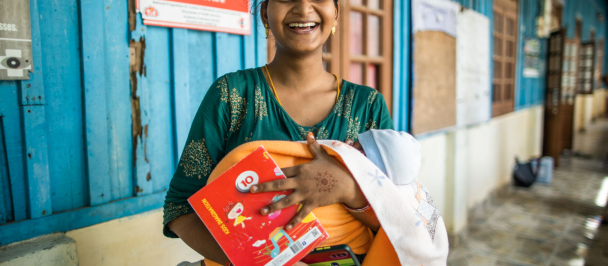Tackling these compounding crises and strengthening healthcare could stop the ancient killer spreading into new territories
Conflict and climate change are supercharging malaria, but it can be stopped
February 15, 2024

Climate change and conflicts are also worsening the global malaria pandemic by forcing mass displacement and disrupting health systems.
The link between climate and the spread of malaria is well-acknowledged. As the planet warms, the threat posed by this ancient killer will only increase.
We are already seeing signs of that future. In 2022, Pakistan experienced its worst malaria outbreak in 50 years when climate-driven mass flooding created large pools of stagnant water and disrupted health systems, creating “the perfect storm” for mosquitos to thrive.
Meanwhile, Anopheles stephensi, an invasive mosquito species originally native to South Asia and the Arabian Peninsula, is rapidly expanding across African countries.
The usual malaria prevention tools are less effective against this species, which breeds through the dry season and is resistant to many typical insecticides.
Unlike most mosquitoes native to Africa, it thrives in urban environments, especially concerning as climate change drives urban migration, exposing an increasing number of people to infection.
What is less well known is the fact that ongoing conflicts are also worsening the global malaria pandemic by forcing mass displacement and disrupting health systems.
As the post-coup conflict in Myanmar undermines health services and displaces entire communities, malaria is making a dramatic comeback in Kayin and Kayah states, wiping out years of progress.
In Sudan, where millions have been displaced by conflict, Médecins Sans Frontières medical facilities have reported a staggering 70 percent malaria positivity rate.
"Fighting diseases like malaria works best when working together, especially across borders."
Vulnerable people are disproportionately affected, but tactics and tools are at our disposal to meet this challenge, especially for those left furthest behind.
The Global Fund to Fight Aids, Tuberculosis and Malaria (The Global Fund) and the United Nations Development Programme (UNDP) work closely together to strengthen health and community systems and create cross-sector partnerships to help address malaria.
Hard-won experience shows that addressing malaria, particularly in disaster- and conflict-struck regions, requires strong health and community systems equipped with digital technologies and trained workers.
It also takes collaboration across key sectors and, ultimately, addressing the root conditions that both allow mosquitoes to flourish and make disadvantaged groups more vulnerable to the disease.
Climate and conflict shock protection
Innovative digital health services can overcome access barriers, particularly for hard-to-reach populations and people living in conflict zones.
In Afghanistan, efforts to digitize the national malaria programme have enabled health providers to store data even when internet connectivity is lost, enabling treatment to continue amid disruption.
Supporting and educating community health workers to identify, diagnose and treat malaria is also key, as demonstrated in Chad, where support for 950 community health workers led to the treatment of more than 211,000 people in 2022.
These kinds of efforts are key to strengthening health and community systems to address malaria in the face of climate- and conflict-driven shocks.

Strong health systems are key for the identification and treatment of malaria cases. In Chad, support for 950 community health workers led to the treatment of more than 211,000 people in 2022.
Fighting diseases like malaria works best when working together, especially across borders. Inter- and intra-country level collaborations can fortify responses, leading to better health outcomes for those most affected.
A partnership between the governments of Mozambique, South Africa and Eswatini backed by a US$24 million grant to accelerate malaria elimination in southeastern Africa has led to some provinces in the region noting a 53 per cent decrease in malaria cases over the past several years, while some three million people have been protected from the disease, greatly reducing cross-border transmission.
There have been many gains in protecting vulnerable populations against global warming and its impacts – but there is still much more to be done, especially in the climate space, and this won’t be achieved without sufficient financing.
It is encouraging that the COP28 United Arab Emirates Declaration on Climate and Health was adopted by 123 countries and resulted in $1 billion in commitments to address the intersection between climate and health.
Yet less than 0.5 percent of multilateral climate finance is currently allocated to health. This must increase to mitigate and adapt to the effects of the climate crisis. We also need to acknowledge that the countries experiencing some of the worst impacts of the climate crisis have contributed to it the least.
Without a concerted effort to tackle climate change and ensure the continued delivery of healthcare in crises and conflict, malaria will continue to spread into new regions.
We must ensure that countries can meet their climate targets while doubling down on global efforts for eradication, with health and community system strengthening and cross-border collaboration as key ingredients for regaining progress against the disease.
If we act now, we can end malaria as a public health threat and ensure that no person, community, or country is left behind.
This article was originally published in The Telegraph.

 Locations
Locations




